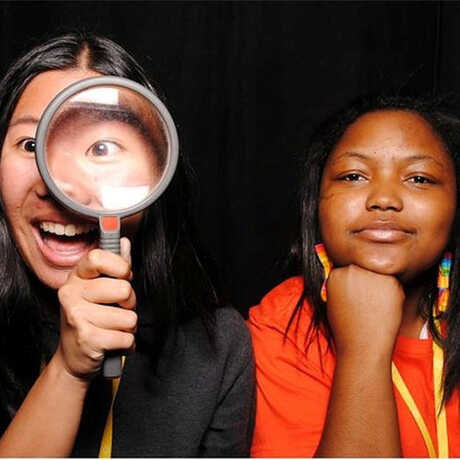Science News
Communicating Science in a Post-Election World

At a time when the world seems to be Spinning hopelessly out of control There’s deceivers and believers And old in-betweeners That seem to have no place to go. –Willie Nelson, “Hands on the Wheel”
For scientists in this post-election world, where professor watchlists are threatening academic freedom and Department of Energy employees are given questionnaires about their thoughts on climate change, the world isn’t spinning out of control (they’re scientists so Earth continues to rotate on its axis about once every 24 hours), they may feel they have no place to go.
But that was before the recent American Geophysical Union (AGU) meeting in San Francisco where California governor Jerry Brown said that not only is this “an interesting time to be a climate scientist” but that it’s also time for scientists as truth-tellers “to rise up and fight back.” It’s time to pick up the pace and wake-up, he continued. “Some people need a heart attack to stop smoking. We just had a heart attack.” It will require “boldness and risk-taking” from scientists, Brown said, adding that “fights are fun.” Hey, scientists, ready to become activists?
Brown’s call to scientific arms wasn’t the only rallying cry at the AGU conference. About 400 scientists showed up for a protest early in the week called Stand Up For Science. And the week of the AGU conference and science protest, Scientific American ran an article called “Is Donald Trump Pushing More Scientists Toward Political Activism?”
After Brown’s AGU pep talk calling on the audience to be the “foot soldiers of science” during the next administration, AGU’s executive director Chris McEntee led a session called “The Shifting Landscape of Science,” which included scientists Dan Kammen of UC Berkeley and Katharine Hayhoe of Texas Tech University.
That landscape shift needs to happen in scientists’ communication and storytelling, the panel and audience seemed to agree. Hayhoe in particular stressed this. As a climate scientist, she understands that her subject of study is more politically polarizing than gun rights and abortion. But she also understands that while climate change is a fact, not a belief (she has a great quote that she used at the meeting and in the New York Times: “Gravity doesn’t care whether you believe in it or not, but if you step off a cliff, you’re going to go down.”), she’s not going to convince people with more facts. Where she used to start with the science, continue with the science, and end with the science when talking to non-scientists, she’s changed that practice. “I’ve learned that climate change is not a head issue, it’s a heart issue… Now when I talk to people, I begin with a general concern or problem that we share. I begin by connecting on an issue that we both have a common concern or connection to, then I add a little bit of science and then I bring it back around the amazing inspirational solutions that are already happening” in her community or home state of Texas.
Kammen agreed. “This storytelling and being very human is essential,” he said. “Our tendency to wait for absolute certainty has held us [scientists] back.”
But as one audience member, scientist Tuba Ozkan-Haller of Oregon State University shared, “Storytelling is not valued in the academic world.” Not like publishing in scientific journals is. And she continued, “that is not only holding us back from communicating science to public, but it’s also affecting issues of diversity” among scientists. The wider audience and panel members seemed to agree.
“Science should connect to the heart,” Hayhoe said. But she didn’t mean by scare tactics—“not as a terrible problem that we can’t fix but how there are amazing solutions that I can share with you.” And she encouraged scientists to communicate climate change in whichever way they’re comfortable. “There’s a whole spectrum of engagement, and where we fall on spectrum is our choice. If you’re willing to talk to people about it go to Climate Voices and sign up.” If you want to talk about the media’s coverage of climate change, she encouraged scientists to go to Climate Feedback, a peer-reviewed online media outlet. And if a scientist wants civic engagement, she said, talk to the Union of Concerned Scientists.
So go out and tell your stories! It’s important that your voice is heard during the next four years and beyond. “We’re at a time when we all need to be outside of our comfort zone,” AGU president-elect Eric Davidson said at the meeting.
After eight-plus years, Science Today is ending our science storytelling run at the end of this year (less than two weeks!). But there are many other great outlets for these stories, including Hayhoe’s recommendations and the Academy’s bioGraphic and Morrison Planetarium’s site (look for content in January 2017). And don’t forget to make your voice heard, too!
Image: Peg Hunter/Flickr

